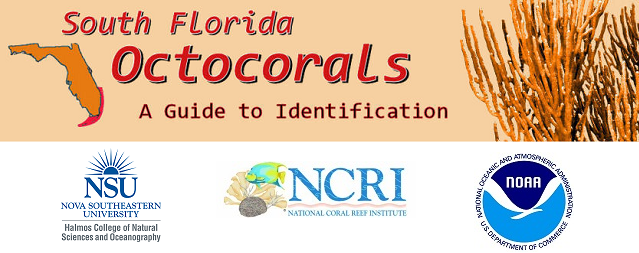Preview

Family
Plexauridae
Common Name(s)
Tayrona sea rod
Colony Form
Bushy or monoplanar colonies, with evenly spaced dichotomous branches; to 1.3 m tall.
Axis
Cylindrical to elliptical in cross-section
Branches
Thin and irregularly bent, 3-5 mm thick, tapering towards tips.
Apertures
Small, uniformly distributed, with calices low, mound-like, with projecting lower lip and noticeable upper lip.
Mucus
Absent
Color
Gray-brown to light ochre. Brown polyps.
Sclerites
Polyp armature of ornate sclerites (0.14-0.32 mm long) and little flat rods (0.06-0.12 mm). Axial layer: diverse array of ornate, usually purple, forms of capstans and spindles, to 0.11-0.17 mm long. Middle layer: blunt spindles with clear dark core under light microscope, usually (shortest among Eunicea species.
Habitat
Shallow semi-exposed reefs, leeward terraces and slope edges in 2-25 m depths. Found along near-shore hard bottom in Broward County, FL.
Distribution
South Florida and throughout the Caribbean Sea.
Similar Species
Date Taken
4-11-2016



Notes
Externally resembles E. fusca but does not exhibit vegetative propagation. Club sclerites and axial layer are noticeably reduced. Axial sclerites of E. fusca are colorless to occasionally violet, with large ornamentation. E. tayrona was named after an extinct Colombian tribe, the Tayrona, that used to live in the Sierra Nevada, Colombia, along the Caribbean coast.